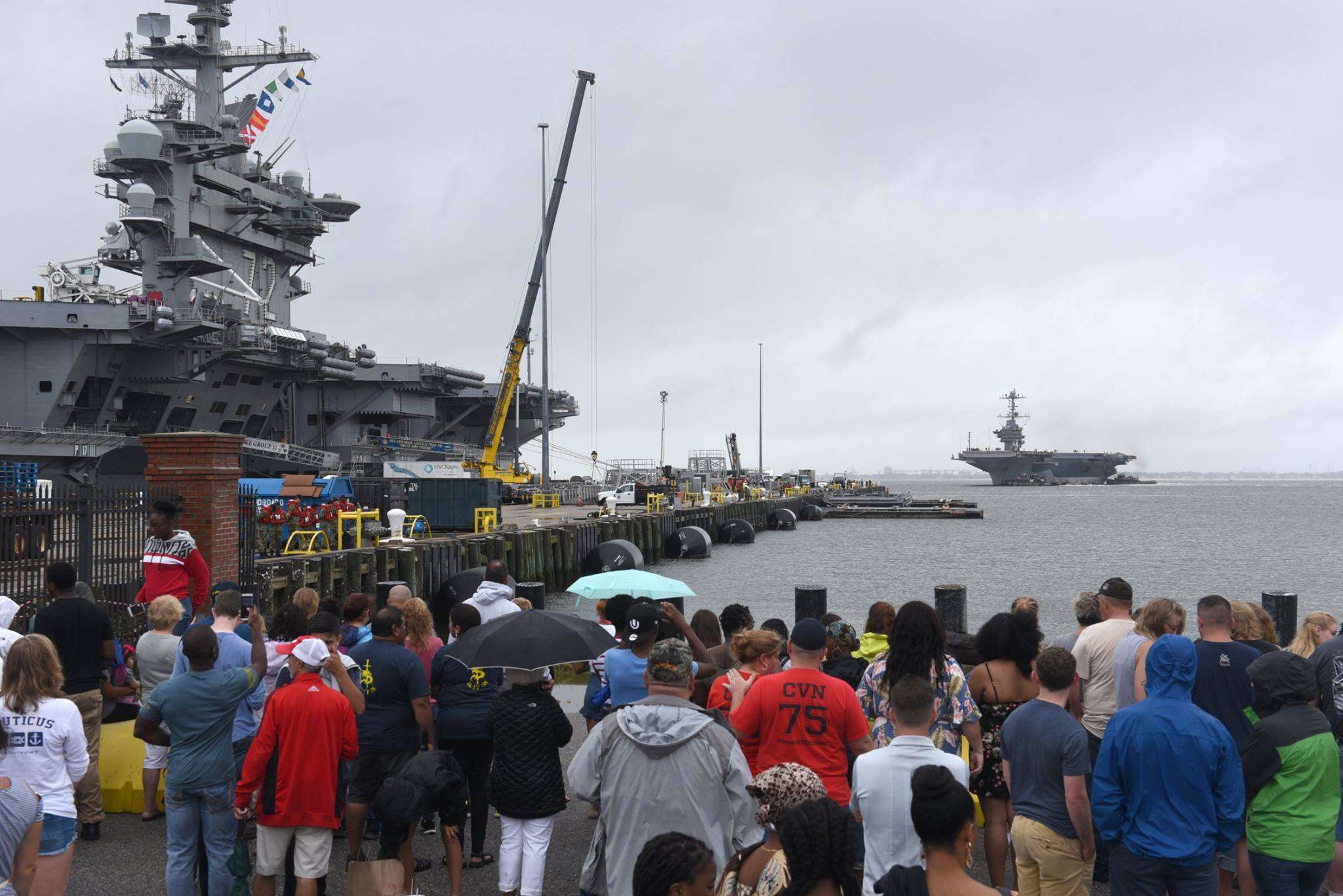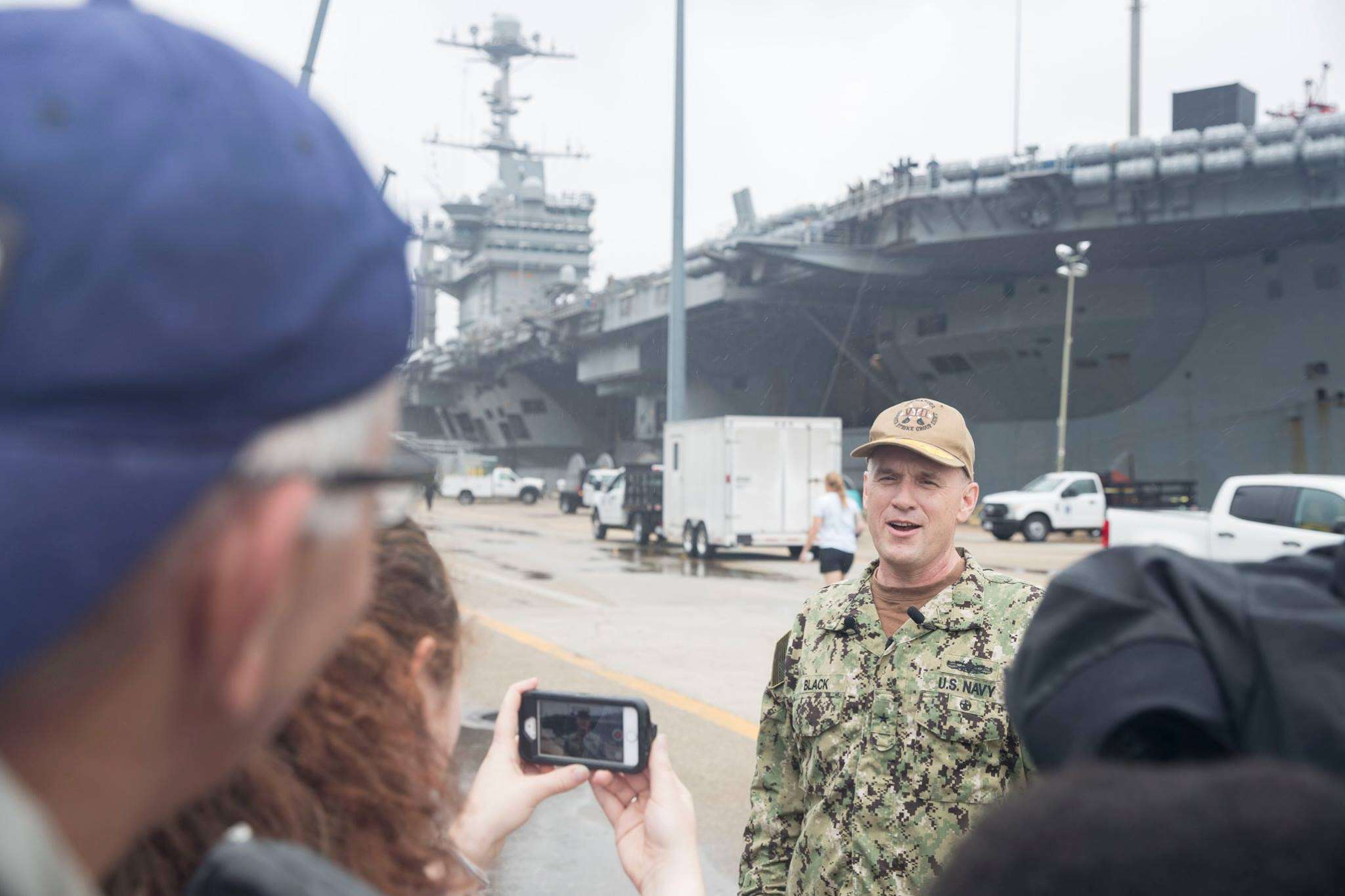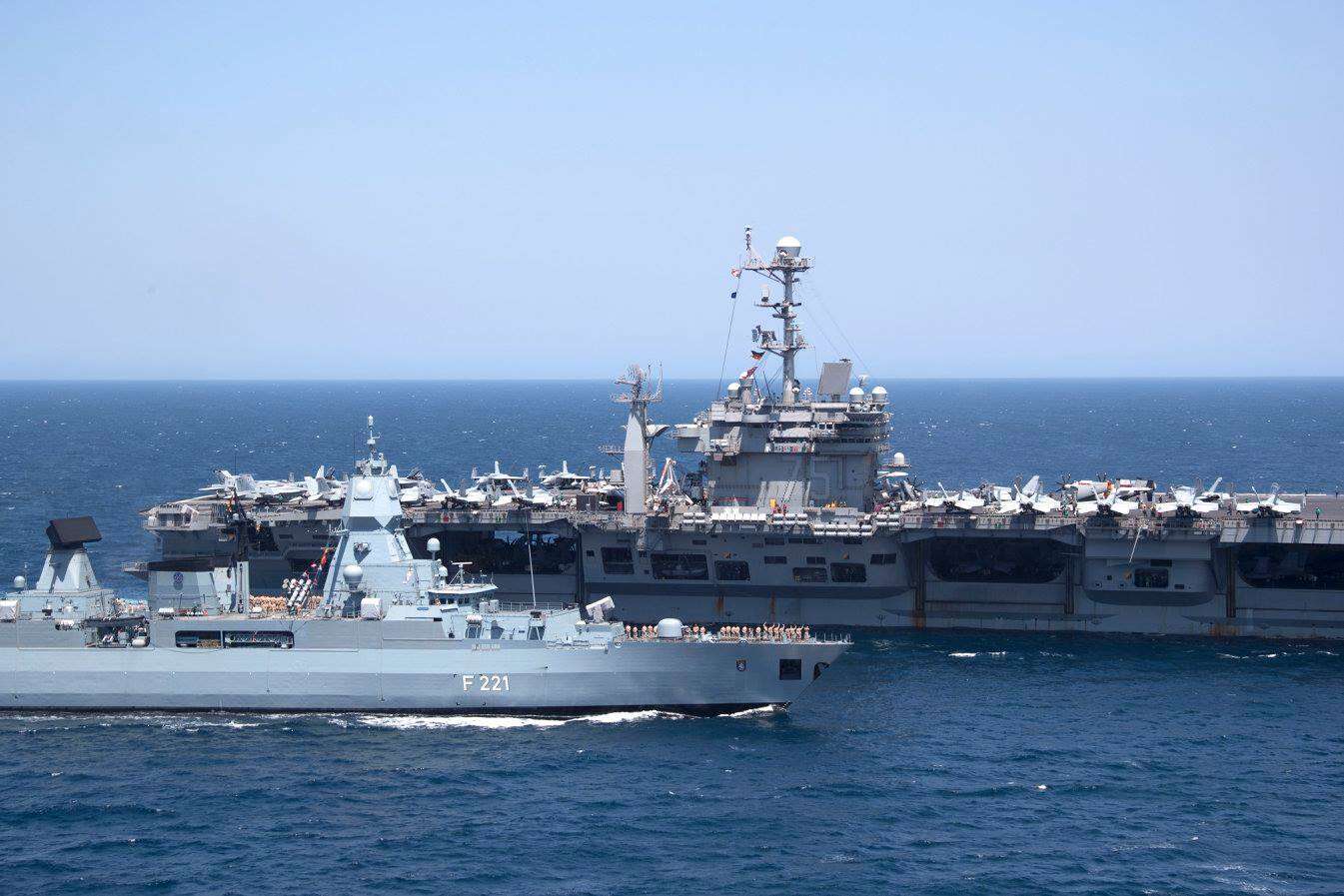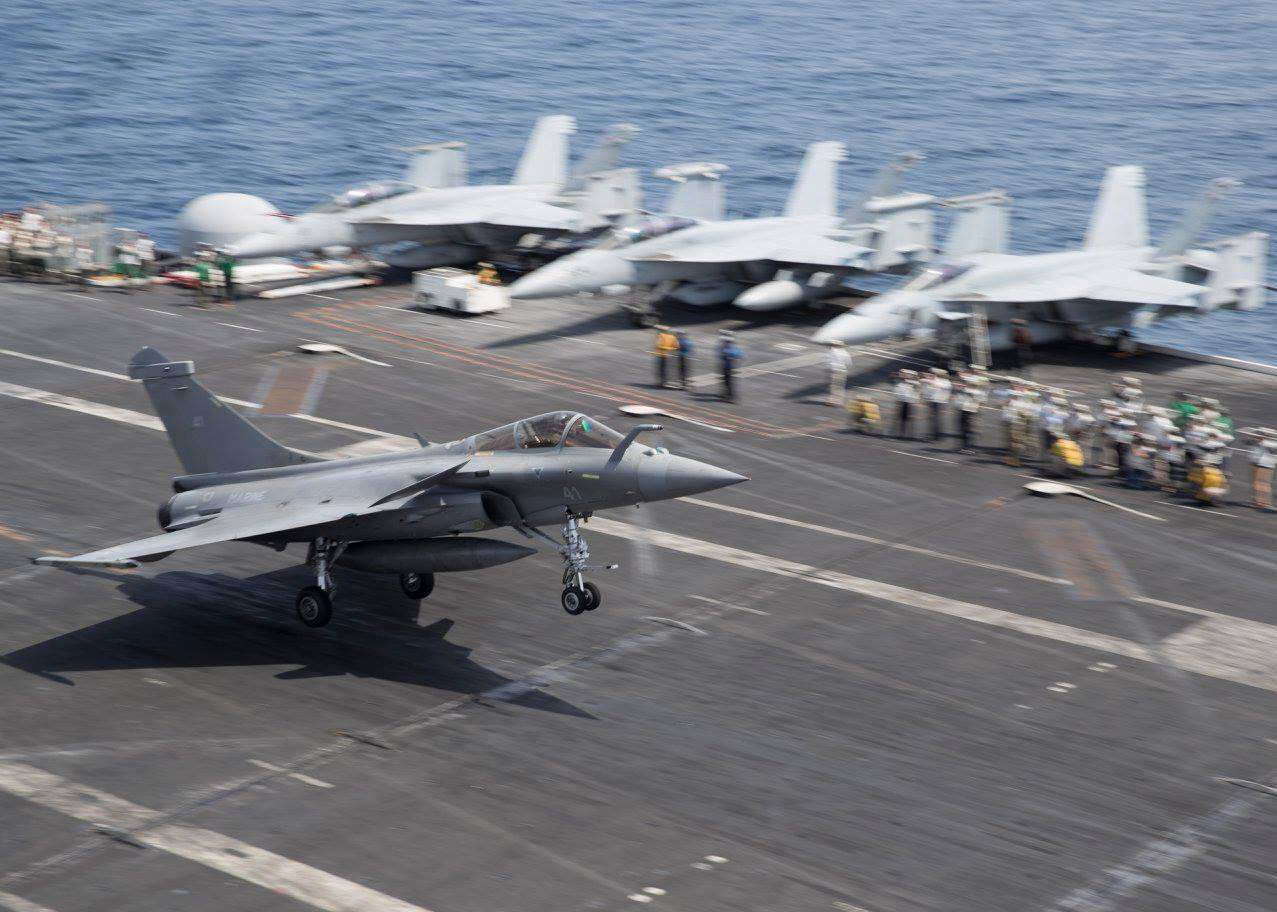Early last May we received clear indications that Secretary of Defense James Mattis was looking to radically overhaul the way the Navy deploys its forces, and most importantly, their carrier strike groups—the most powerful flotillas on the sea. Now, the first example of this new strategy has come to pass, and it is likely just a preview of what’s to come.
America’s nuclear supercarriers have historically deployed in a highly predictable and cyclical fashion, with cruises lasting six to nine months that follow predictable routes. In recent years, there has been a bit more flexibility built into the system for surge operations, but a wily and cunning modus operandi it is not. Mattis described the new plan as “dynamic force employment” and claims it is necessary in a new age of great power competition, stating the following to House lawmakers:
“The way you do this is ensure that preparation for great power competition drives not simply a rotational schedule that allows me to tell you, three years from now, which aircraft carrier will be where in the world… When we send them out, it may be for a shorter deployment. There will be three carriers in the South China Sea today, and then, two weeks from now, there’s only one there, and two of them are in the Indian Ocean.
They’ll be home at the end of a 90-day deployment. They will not have spent eight months at sea, and we are going to have a force more ready to surge and deal with the high-end warfare as a result, without breaking the families, the maintenance cycles — we’ll actually enhance the training time.”
This is precisely what the Truman Carrier Strike Group just did. USS Harry S. Truman (CVN-75), USS Normandy (CG-60), USS Arleigh Burke (DDG-51) and USS Forrest Sherman (DDG-98) just spent three months in the 5th and 6th Fleets’ areas of responsibility, returning to Norfolk on July 21st, 2018. A number of other surface combatants assigned to their strike group have remained deployed on unique tasking.
Truman’s homecoming was a far more subdued event than the usual homecoming spectacle. The Navy specifically downplayed the ship’s return to port after its truncated cruise. Rear Admiral Gene Black, commander of the Truman Carrier Strike Group, described the change in deployment structure and the lack of a major homecoming as such to local reporters:
“You’ll notice, I’m in a working uniform and captain is in his flight suit. We don’t have any balloon makers. We don’t have a band and all that. This is a working port…
What you’re seeing is the Navy’s execution of dynamic force employment in support of the national defense strategy,” Black said. “We’re strategically predictable and operationally unpredictable…
We’re in until we’re told to sail,” Black said. “We could deploy next week and go right back over to sixth fleet or fifth fleet. We’re 100 percent ready to go, we’re fully mission capable. Based on the performance I’ve seen to date, there’s no challenge you can throw at my sailors that they won’t crush.”
Admiral Black addresses the crowd pier-side.
Black also described the Truman’s most recent deployment and the new cruise format as such in a Navy release:
“I couldn’t be more proud of this strike group team’s performance over more than three months of operating in a highly-dynamic environment across two theaters… We carried out the full spectrum of missions from sustained combat flight operations to training and integration with NATO allies and regional partners.
Our strike group’s missions have demonstrated we are inherently maneuverable and flexible while remaining operational unpredictable to any potential adversary… This epitomizes the Navy’s dynamic force employment concept and shows this strike group is ready and capable of accomplishing any mission, at any time, as our nation directs.”
Truman and her escorts will continue to train and be at the ready to deploy at any given time in the coming months, and they could feasibly redeploy tomorrow as an unannounced planned operation or due to a crisis.
Overall, the strategy is meant to inject unpredictability into America’s sea-going force. In the process, it could make life at home for sailors and their families more bearable. Additional training and maintenance opportunities may also prove valuable under this new plan.
But how exactly this dynamic force employment strategy will actually coexist with the Navy’s traditional 36-month supercarrier operations cycle is yet to be seen. Under this traditional operational structure, carrier strike groups usually deploy for roughly eight months, execute lower intensity training and receive heavy maintenance for 16 months, and sit ready for a relatively short-notice deployment for another year. Predictability is the cornerstone of this scheduling plan, with air wing workups, major ship maintenance, manning levels, and pretty much everything else planned in parallel to it.
The German Navy frigate FGS Hessen (F 221) renders honors to the Nimitz-class aircraft carrier USS Harry S. Truman (CVN-75). FGS Hessen operated with the Truman CSG during part of the ship’s deployment to the Mediterranean and the Atlantic.
As Defense News’s David Larder article on the subject explains, the strategy may provide more reactionary capacity and it may also ease the mechanical pressure being applied to an aging fleet, but it also sacrifices upfront presence and deterrence. Also, there is no getting around it, that if the strike groups do surge it could result in cascading disruptions down the line in terms of everything from operational budgets to the time ships will need to spend in port or drydock for maintenance.
90-day deployments also may be unrealistic in the long-run because of just how long it takes a carrier to transit vast stretches of ocean. More than half that time can be eaten up just reaching a flotilla’s intended station. Whether the return on investment makes sense, under those circumstances, is up for debate.
Really, the size, cost, complexity, and rigid maintenance requirements of the nuclear supercarrier make such a strategy hard to realize over the long term. This is just another reason why the Navy needs to field smaller aircraft carriers, potentially with conventional power plants, instead of an all-nuclear-powered supercarrier force that is already becoming dangerously unaffordable.
French Rafale-Ms also spent time aboard the Truman during its three-month-long deployment.
We’ll have to see just how sustainable all this is with the current hardware in the Navy’s inventory and a very strong habit of highly predictable carrier operations. But if the Navy ends up liking what it sees operationally speaking, it may realize that more deployable and smaller carriers may be necessary to maintain Mattis’s dynamic force employment strategy in the decades to come.
In the meantime, welcome home to the Truman Carrier Strike Group! It may have been a shorter deployment, but a deployment all the same.
Contact the author: [email protected]
Source: Read Full Article




